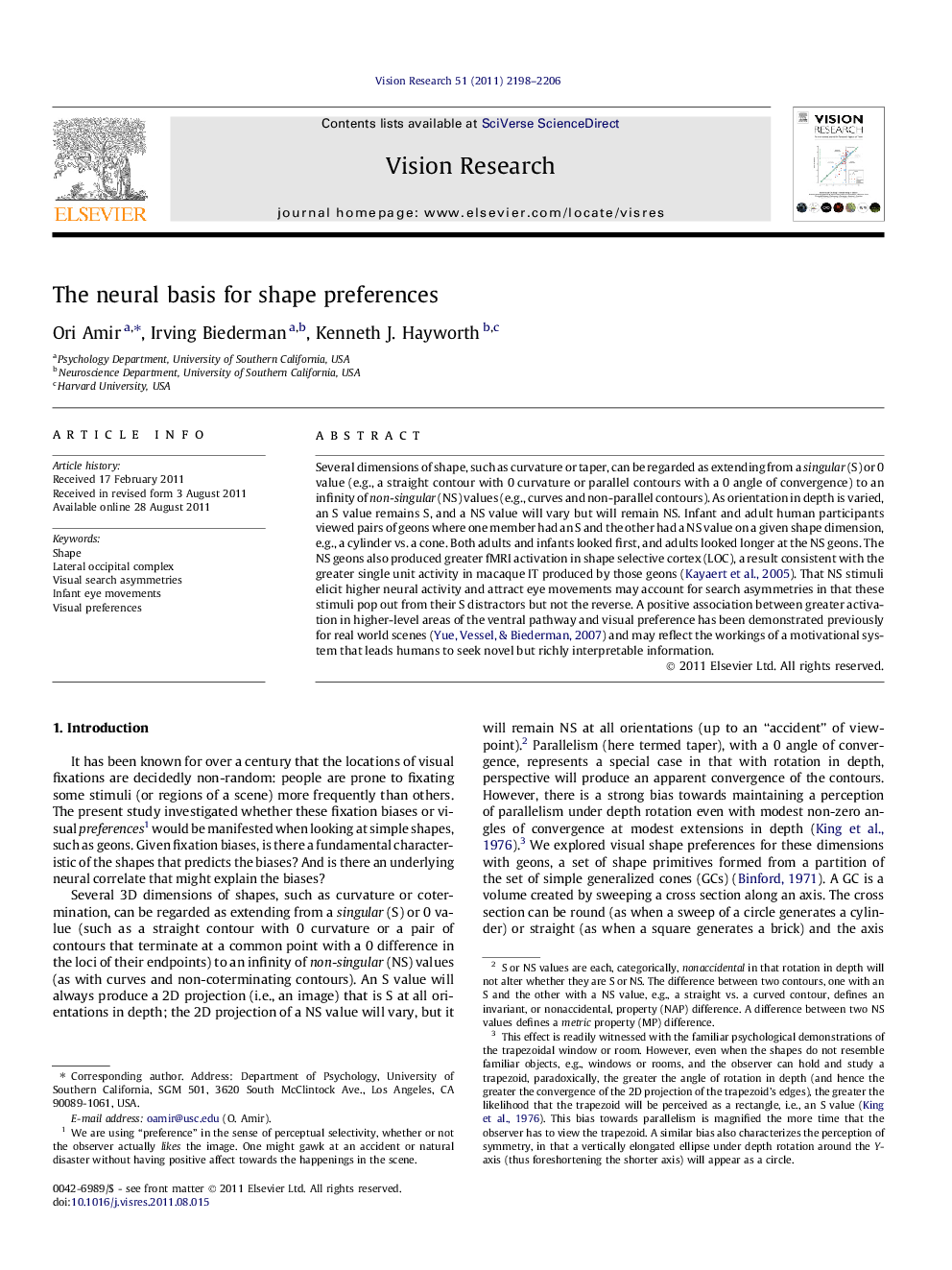| Article ID | Journal | Published Year | Pages | File Type |
|---|---|---|---|---|
| 4034124 | Vision Research | 2011 | 9 Pages |
Several dimensions of shape, such as curvature or taper, can be regarded as extending from a singular (S) or 0 value (e.g., a straight contour with 0 curvature or parallel contours with a 0 angle of convergence) to an infinity of non-singular (NS) values (e.g., curves and non-parallel contours). As orientation in depth is varied, an S value remains S, and a NS value will vary but will remain NS. Infant and adult human participants viewed pairs of geons where one member had an S and the other had a NS value on a given shape dimension, e.g., a cylinder vs. a cone. Both adults and infants looked first, and adults looked longer at the NS geons. The NS geons also produced greater fMRI activation in shape selective cortex (LOC), a result consistent with the greater single unit activity in macaque IT produced by those geons ( Kayaert et al., 2005). That NS stimuli elicit higher neural activity and attract eye movements may account for search asymmetries in that these stimuli pop out from their S distractors but not the reverse. A positive association between greater activation in higher-level areas of the ventral pathway and visual preference has been demonstrated previously for real world scenes (Yue, Vessel, & Biederman, 2007) and may reflect the workings of a motivational system that leads humans to seek novel but richly interpretable information.
► Given a display of two simple shapes (geons, G), which one will attract fixations? ► G dimensions (axis curvature, taper of sides) are singular (S) or non-singular (NS). ► S are view invariant, 0 values: 0 curvature (straight) or 0 convergence (parallel). ► Infants and adults fixate the non 0 NS which elicit greater neural activity. ► Greater neural activity and fixations of NS explain asymmetries in visual search.
